The red-crested cardinal is a medium-sized bird that looks a lot like the well-known Northern Cardinal. However, this songbird is related to tanagers.
It is native to parts of South and Central America, but was introduced to and is also found in Puerto Rico and Hawaii.
This article provides more information, fun facts, and beautiful photos of this cardinal look-alike.

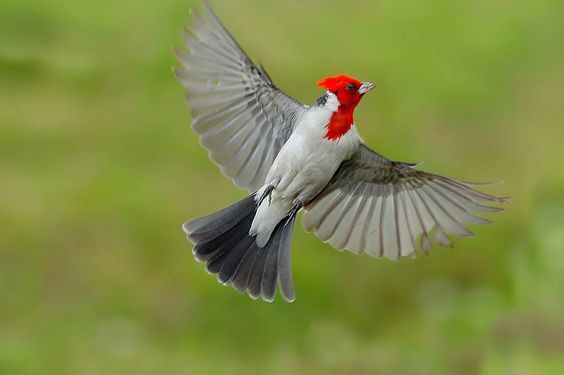
Red-Crested Cardinal
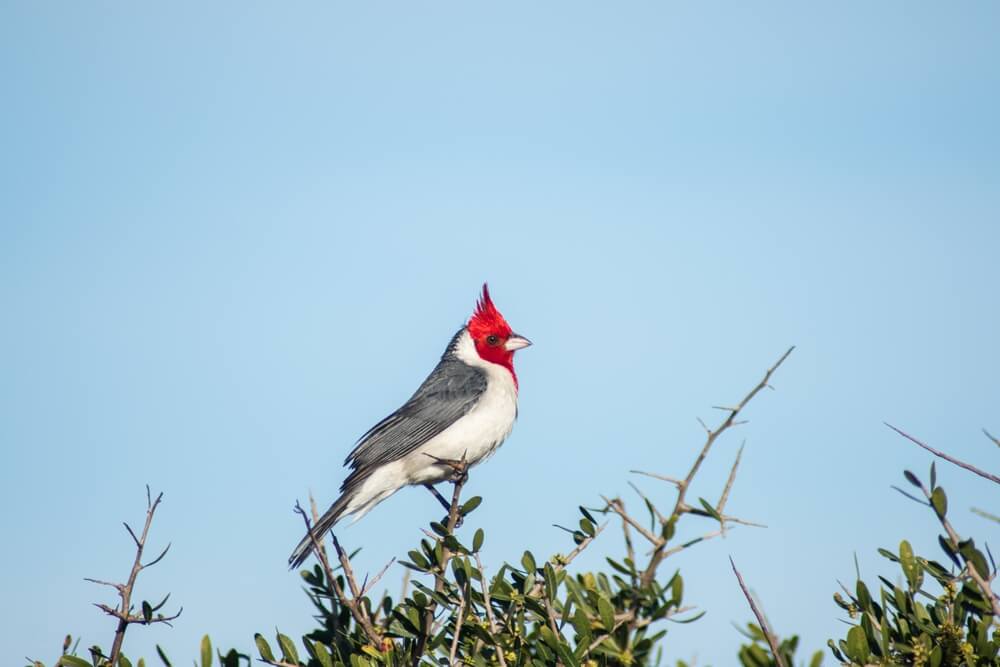
Overview
Scientific name: Paroaria coronata
Length: 7.1 to 7.9 inches
Wingspan: 7.9 to 8.7 inches
Weight: 1.1 to 1.2 ounces
Male and female red-crested cardinals are hard to tell apart because they have similar plumage.
Despite their striking resemblance to northern cardinals, they belong to the family of Thraupidae with tanagers.
Male & Female
Males and females alike present with a noticeable red crest and a pale silver bill. They have dark gray plumage on their backs. Their bellies are white.
The head and upper breast are bright red like the coloring of their crests. Their legs are dark in color.
Juveniles lack red feathers and have brown heads, crests, and breasts instead. Their bills are dark colored.
Behavior

Red-crested cardinals are diurnal birds that live in pairs or small family groups. In non-breeding seasons they will form larger flocks.
During the breeding season, males can become aggressive over their territories, chasing off intruders.
Males and females raise or lower their crests to communicate to potential mates, indicate an alarm, or make themselves look bigger to intruders.
They have an undulating flight path, where they flap their wings in short bursts as they rise, and then glide in a freefall with folded wings as they descend.
The red-crested cardinal has a melodious song with varied but repetitive phrases of whistles and chirps.
Range

This bird is native to Uruguay, Paraguay, southern Brazil, Bolivia, and Argentina. It is sometimes referred to as the Argentine cardinal or Brazilian cardinal.
The red-crested cardinal was introduced to Puerto Rico and Hawaii and can now be found there as well.
Diet
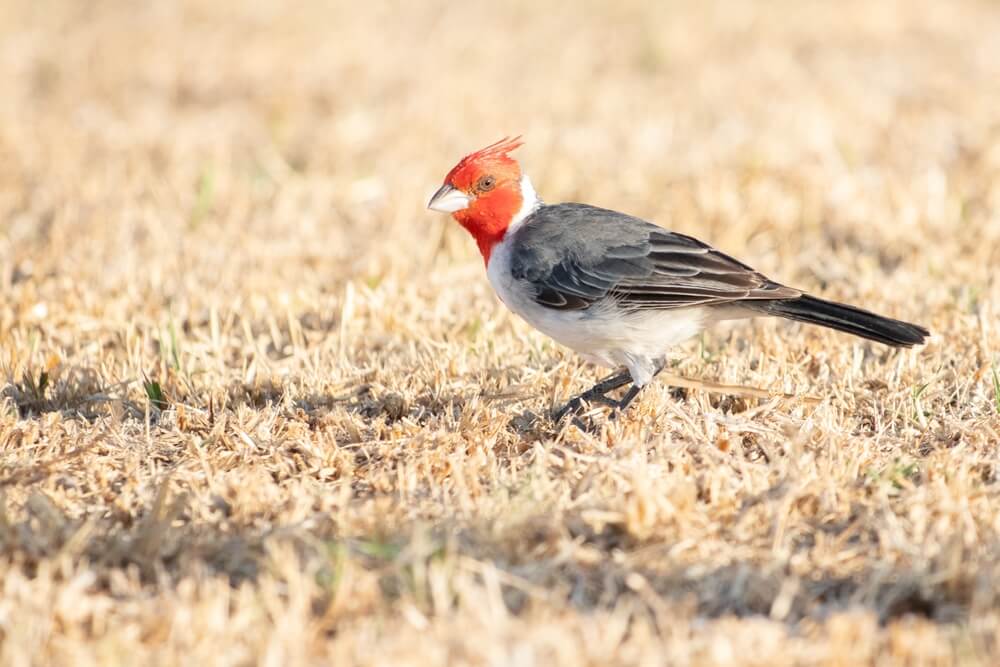
The red-crested cardinal has an omnivorous diet. It eats insects, fruits, and seeds, typically hopping and foraging on the ground.
This video shows a Hawaiian-spotted red-crested cardinal foraging on the ground:
Habitat
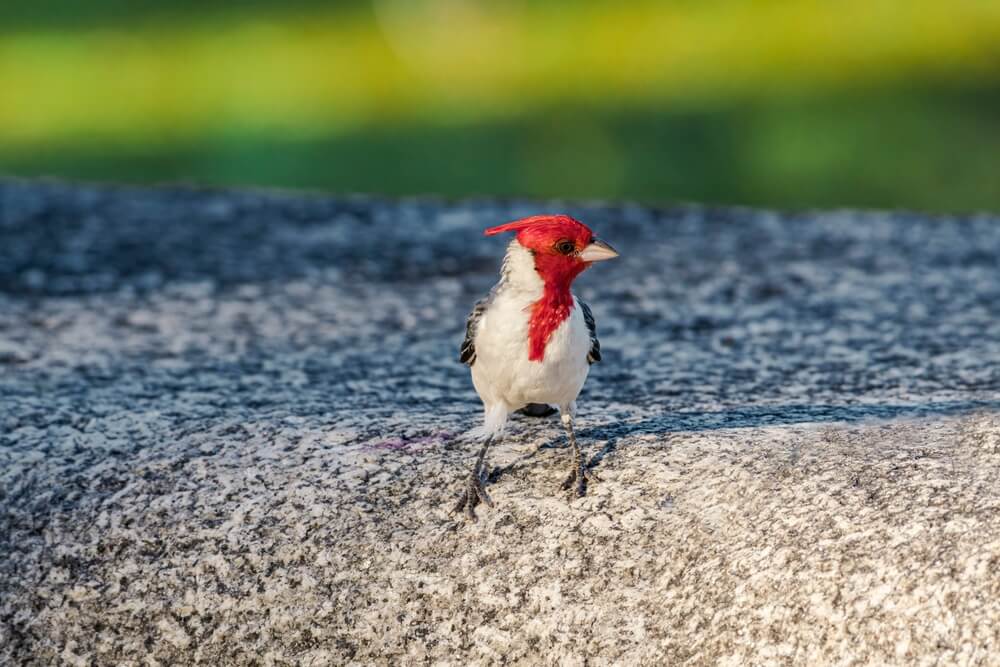
Red-crested cardinals typically live in semi-open areas that include trees, shrubs, yards, moist tropical areas, tropical savanna, and degraded forests, near water.
They can also adapt to human-inhabited areas and are found foraging in agricultural lands and suburban and urban areas.
Breeding
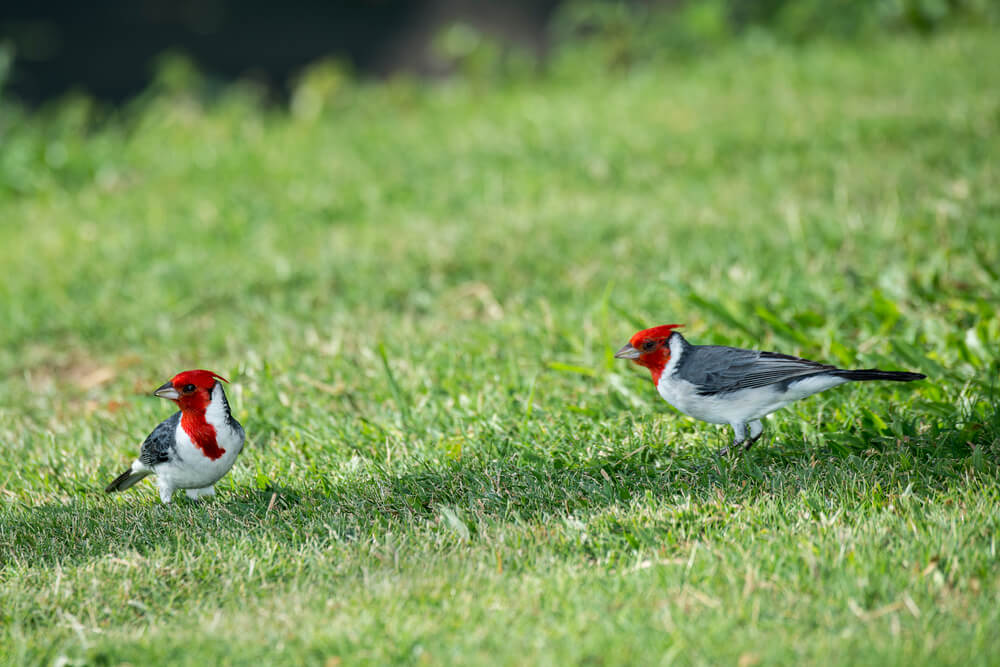
Red-crested cardinals are monogamous during the breeding season. Also, red-crested cardinals held in captivity will successfully breed.
They pair up with vocalizations and sing songs in duets. They strut and fan their tails, and click their bills to court each other.
Both the male and female build the nest in low shrubbery of assorted plant materials. The female lays 2 to 3 eggs that are greenish-white with brown or mauve streaks.
The female is responsible for incubating the eggs for 1 to 12 days. Both parents feed the hatchlings.
The chicks leave the nest 2 to 3 weeks later. However, the juveniles may stay with their parents in a family group for up to a year until they find a mate.
The pair may raise a second brood.
Migration
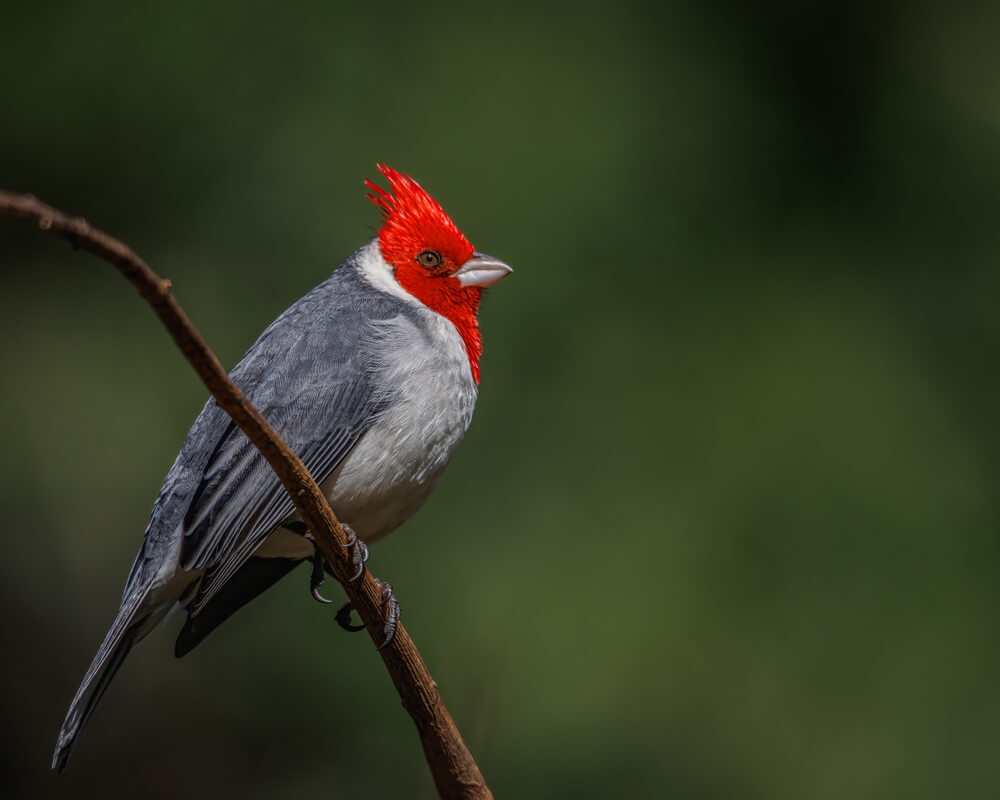
The red-crested cardinal does not migrate.
This is most likely because it is living in warm areas year-round.
Conservation
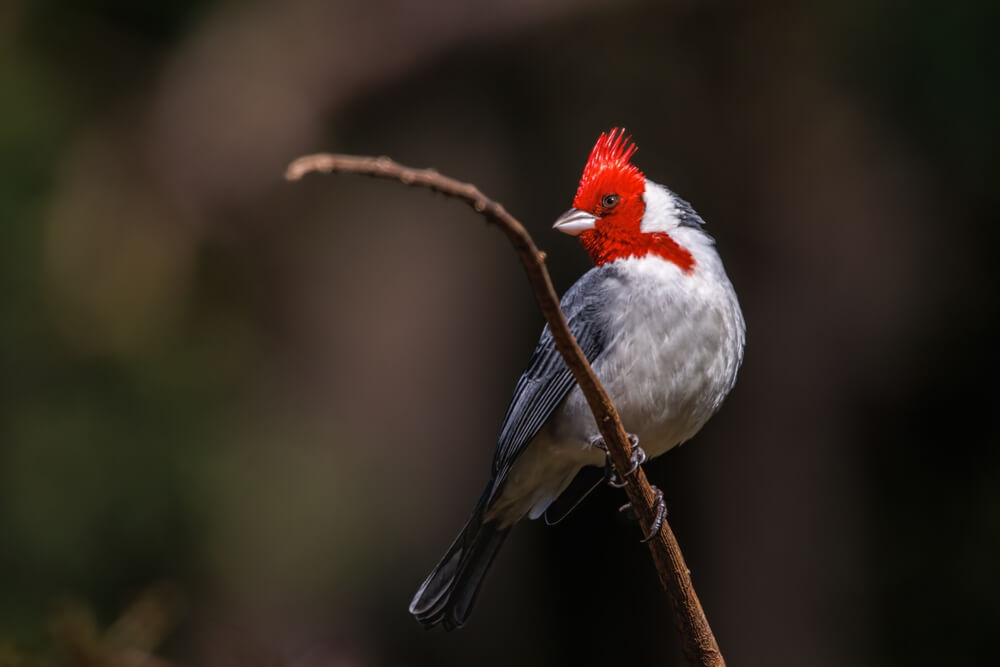
The red-crested is rated as “least concern” regarding its conservation status. It has a large range and an estimated stable population.
However, habitat loss, bird poaching, and domestication of these birds can negatively impact their natural breeding practices and population growth over time.
How To Attract The Red-Crested Cardinal

The red-crested cardinal is not common in most of the United States but is attracted to yards, much like northern cardinals.
Those that live in Hawaii or Puerto Rico may find that this bird visits their yards foraging on the ground underneath seed bird feeders.
They are not easily scared of humans and may even approach people for food if offered in an outstretched hand close to the ground.
Facts About The Red-Crested Cardinal
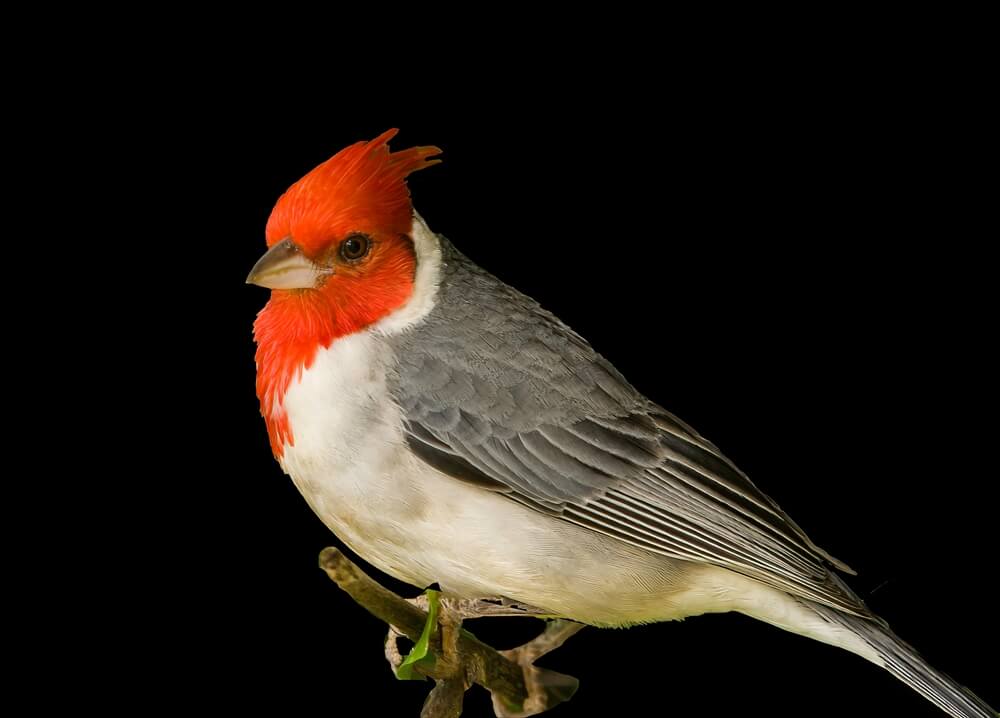
The red-crested cardinal has appeared on stamps in its native countries and in the “Rio” movie series.
If a male cannot find his mate, he produces a guttural call.
These birds can live in the wild for 3 to 6 years and up to 13 years in captivity.

